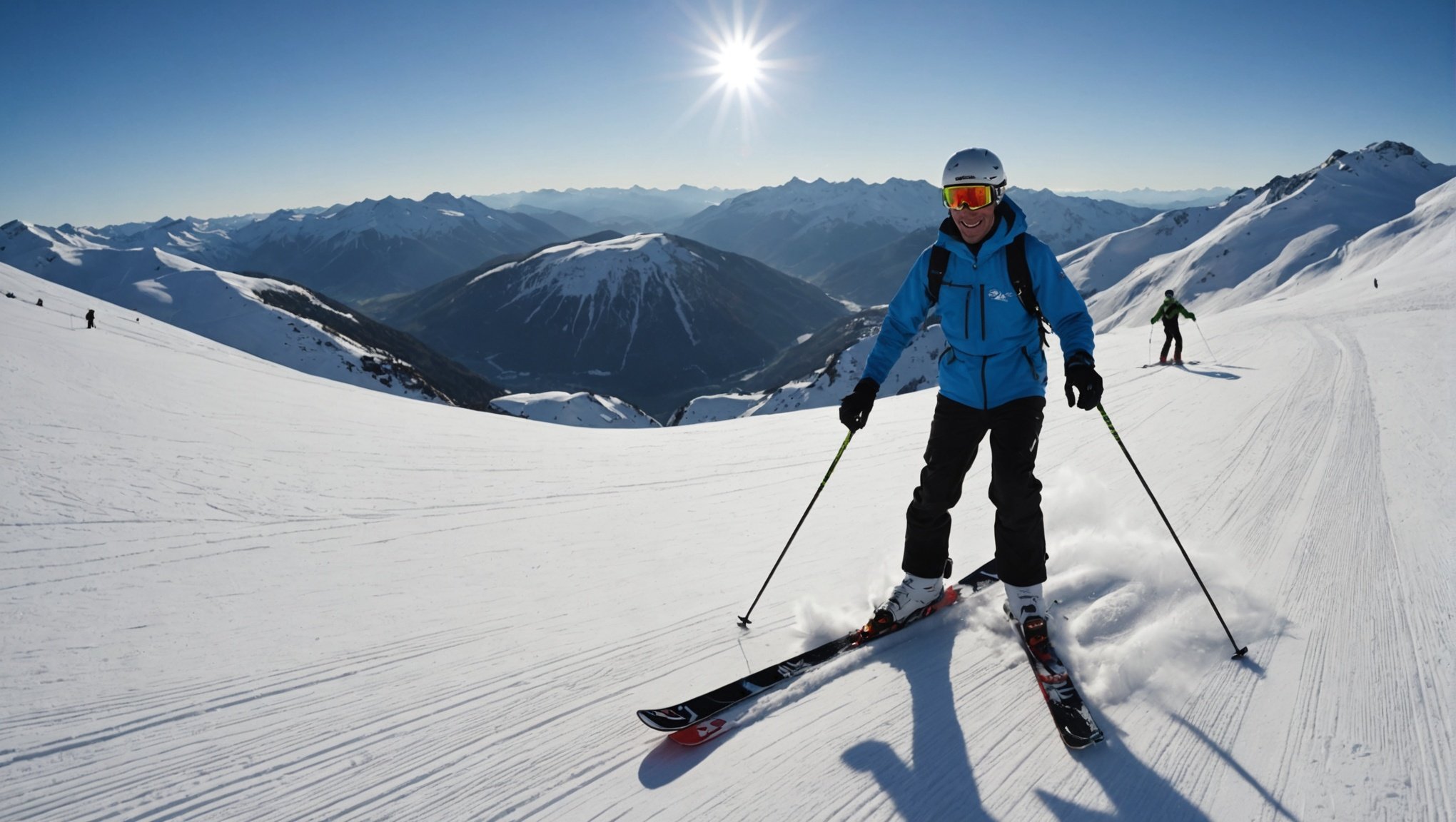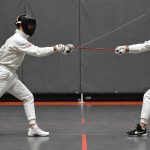Innovative Ski Teaching Techniques
In the vibrant landscape of ski instruction across the UK, innovative ski teaching methods have transformed how novices tackle the slopes. Traditional instruction strategies have evolved significantly with the integration of advanced techniques and technologies. Ski schools now incorporate a blend of practical and theoretical approaches to enhance learning.
Recent ski instruction strategies employ adaptive teaching, where instructors tailor lessons to the unique needs of each student. This approach enhances comprehension by focusing on individual learning speeds and preferences. Moreover, technology is profoundly impacting instruction, introducing tools like virtual reality for pre-lesson familiarisation. These virtual environments provide learners with visual guides to skiing movements, augmenting their practical experience.
Also to read : Essential Safety Measures for UK Ice Hockey Leagues: Minimizing Player Injuries
The introduction of motion sensors and video analysis allows instructors to give real-time feedback to students on their form and technique. These advanced skiing techniques ensure that learners quickly refine their skills and build confidence on the slopes. Additionally, mobile apps provide skiers instant access to tutorials and progress-tracking features, making personalised learning more accessible than ever.
Such innovative ski teaching methods not only make learning more engaging but also considerably accelerate skill development. As technology continues to advance, it will undoubtedly open new avenues for ski instruction, making it an ever-evolving and exciting field.
Also read : Top Exercises to Boost Javelin Throwing Distance for UK Athletes
Engaging Novice Skiers
Creating an inclusive environment for novice skiers is paramount. Teaching strategies that infuse fun elements can significantly enhance their learning experience. Introducing games like “follow the leader” or engaging in a playful race can keep enthusiasm high and reduce intimidation. This motivational technique is particularly effective in dismantling the barriers that could otherwise hinder progress.
Tackling the challenge of varying skill levels within a group demands strategic thinking. One effective approach is implementing progression stations. These allow learners to move at their own pace between different skills, thus accommodating diverse abilities without highlighting disparities. Additionally, pairing new learners with slightly more experienced peers fosters peer learning, which naturally bolsters engagement and understanding.
Building confidence in novice skiers is integral to their success. Positive reinforcement plays a pivotal role in this. Commendations for small achievements, such as mastering a new technique, can cultivate a sense of accomplishment and encourage persistent effort. It is essential for instructors to emphasise progress over perfection, celebrating every improvement. This approach not only boosts self-esteem but sustains motivation throughout the learning process, creating a thriving space for novice skiers. Engaging them through these structured yet dynamic strategies ensures a positive and rewarding skiing adventure.
The Role of Visual Aids in Ski Instruction
Incorporating visual aids in skiing can significantly enhance the learning process by providing clear and structured guidance. When using instructional tools, instructors can choose from a variety of teaching aids such as diagrams and video resources.
Types of Visual Aids
Visual aids like instructional diagrams, video demonstrations, and augmented reality applications serve as effective teaching aids. Diagrams can illustrate skiing techniques and terrain layouts, offering students a visual reference that simplifies complex movements. On the other hand, videos allow learners to observe real-time execution of techniques, which enhances their understanding.
Effective Examples
Employing tools such as slow-motion video analysis enables learners to pinpoint areas for improvement in their skiing technique. Meanwhile, diagrams of ski paths can illustrate correct movement patterns, thereby solidifying conceptual understanding. These resources act as essential instructional tools for instructors striving for comprehensive skills transfer.
Impact on Skill Acquisition
Case studies in ski instruction reveal that using visual aids in skiing accelerates skill acquisition. Visuals provide students with the clarity needed to replicate demonstrated movements, resulting in more effective learning. As learners absorb information visually, their capacity to understand and implement improves, indicating that instructional tools are vital in the learning journey.
Real-World Examples of Progression
Progression in skiing can be seen clearly through documented success stories where novice skiers have blossomed into proficient enthusiasts. For instance, Sam, a beginner last winter, can now expertly navigate intermediate slopes. This journey often begins with a well-structured lesson plan that incrementally builds on existing skills. A lesson might start with teaching fundamental techniques such as balance and posture before gradually introducing more complex movements, like parallel turning and controlling speed on steeper terrains.
Skiing skill development is often accelerated by the insights and expertise of seasoned instructors. Testimonials from these professionals consistently highlight the benefits of a tailored teaching approach. Instructor Jane Doe asserts, “Personalised lesson plans that adapt to each student’s pace and learning style are key to effective skiing progression.”
Understanding these methodologies enables new skiers to progress effectively. Instructors utilise an array of tools, including video analysis, on-slope demonstration, and guided practice, ensuring students are constantly engaged and challenged at just the right level. As a result, many novices experience rewarding advancement, providing more confidence and autonomy on the slopes. This holistic approach forms a backbone for skilled skiing mastery, transforming beginners into confident skiers ready for greater challenges.
Feedback and Assessment Techniques
In the world of ski instruction, feedback is vital for nurturing new talent. Providing precise, understandable feedback helps novice skiers to refine their technique, and ultimately, improve their abilities on the slopes. It’s important to provide feedback that balances encouragement with clear, corrective advice. For example, pinpointing areas such as stance, balance, and technique adjustment allows learners to understand exactly what needs improvement.
Another crucial facet to consider is the assessment of ski skills. Utilizing structured assessment methods ensures that progress is measured accurately over time. Metrics such as the skier’s ability to handle various terrains, the fluidity of motion, and adherence to safety protocols can serve as effective indicators of advancement. These metrics help instructors to tailor lessons and focus on specific skill enhancements, leading to more significant progress.
A growing trend in ski instruction is the adoption of self-assessment tools. These tools empower skiers to track their own progress, fostering a greater sense of ownership over their learning. By employing diaries, video analysis, or digital tracking apps, skiers can record and evaluate their experiences. This not only motivates personal growth but also aids instructors in providing more targeted, individual feedback. A collaborative approach combining self-assessment and instructor feedback can pave the way for accelerated learning and competence.
Adapting Techniques for Different Learning Styles
Recognizing and accommodating learning styles in skiing instruction is essential for effective teaching. Each student may have a unique way of processing information, whether it’s through visual, auditory, or kinesthetic stimuli. These differences necessitate adaptive instruction to maximise learning potential.
Visual learners benefit from demonstrations and videos showing skiing techniques. Instructors should focus on creating clear, visual scenarios to illustrate movements and form. Alternatively, auditory learners often thrive on verbal explanations and discussions. Describing techniques in detail and offering frequent feedback can help these learners internalise skiing concepts.
Kinesthetic learners, on the other hand, excel through hands-on experience and feeling the movements. Providing them with ample opportunities to practice under supervision is key. Encouraging students to engage physically with activities and allowing them to explore skiing dynamics first-hand is vital.
Individualized teaching approaches are critical in customizing these strategies to meet diverse students’ needs. They consider each learner’s preferences and strengths, adjusting the instruction style accordingly. For instance, a composite approach might include using verbal cues paired with a demonstration to cater to mixed learning styles.
Success stories often emerge when instructors employ adaptive techniques, leading to positive outcomes for novice skiers. By understanding and implementing personalized teaching methods, instructors can help every student reach their skiing potential effectively.











